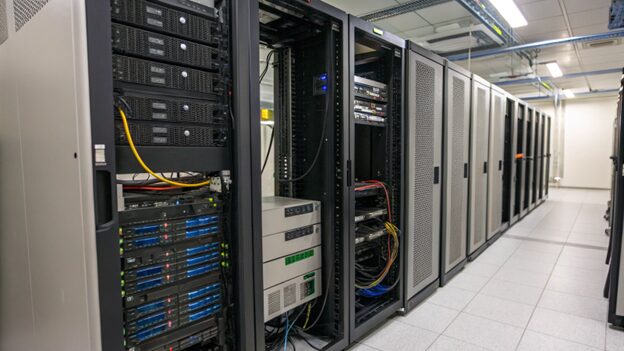CPU-GPU Deep Fusion: Elevate US Server Performance

CPU-GPU deep fusion has emerged as a transformative force in the US server landscape, redefining the limits of computational power for tech professionals navigating high-load scenarios. As hosting and colocation demands grow more complex, the traditional siloed operation of CPU and GPU components creates critical inefficiencies—redundant power consumption, data transfer latency, and underutilized computing power—that hinder performance. This article delves into the core mechanics of CPU-GPU deep fusion, its tangible impact on US server capabilities, and actionable strategies for leveraging this technology to unlock next-level efficiency, all while avoiding brand-specific biases and excessive data dumps.
1. Fundamentals: CPU vs. GPU in US Server Ecosystem
The US server infrastructure relies on two foundational computing engines, each with distinct strengths and limitations:
- CPU (Central Processing Unit): Engineered for general-purpose computing, excels at complex logical operations, task scheduling, and sequential data processing—critical for managing OS workflows and discrete server tasks.
- GPU (Graphics Processing Unit): Optimized for parallel computing, with hundreds of cores designed to handle repetitive, data-dense operations simultaneously—ideal for graphics rendering, machine learning, and large-scale data analytics.
Historically, these components operated in isolation, connected via standard interfaces that created bottlenecks. For US server environments, this separation translates to wasted potential: CPUs struggle with parallel workloads, while GPUs remain idle during logical processing tasks, leading to suboptimal performance in hosting and colocation setups.
2. Core Value Propositions of CPU-GPU Deep Fusion for US Servers
CPU-GPU deep fusion eliminates silos by creating a unified computational framework, delivering three game-changing benefits for US server deployments:
- Synergistic Performance Boost: By integrating parallel processing (GPU) and logical orchestration (CPU), US servers handle hybrid workloads—from AI inference to real-time data streaming—with seamless efficiency, eliminating bottlenecks caused by component handoffs.
- Energy Efficiency Optimization: Reduced data transfer between discrete components cuts redundant power usage, a critical advantage for US server farms focused on sustainability and lowering colocation operational costs.
- Architectural Simplification: Unified memory access and optimized interconnects streamline hardware design, enhancing US server flexibility for dynamic hosting demands, from edge computing to cloud-scale deployments.
3. Key Technologies Enabling CPU-GPU Deep Fusion
Successful integration of CPU and GPU in US servers relies on breakthroughs in hardware and software coordination, designed to maximize interoperability without vendor lock-in:
Hardware Innovations
- Unified Memory Architecture: Shared high-bandwidth memory pools allow CPU and GPU to access data simultaneously, eliminating latency from data copying between discrete memory modules.
- High-Speed Interconnects: Next-generation bus technologies enable direct, low-latency communication between components, far exceeding the limits of traditional interface standards.
Software Optimization
- Heterogeneous Computing Frameworks: Open-standard software stacks that enable intelligent task distribution, routing parallel workloads to GPUs and logical operations to CPUs automatically.
- Driver-Level Integration: Optimized firmware that synchronizes component clock speeds, power management, and data handling, ensuring cohesive performance across diverse US server workloads.
4. Practical Applications in US Server Environments
CPU-GPU deep fusion unlocks new capabilities across key US server use cases, addressing the unique challenges of tech professionals:
- Artificial Intelligence & Machine Learning: Accelerates model training and inference workflows, enabling US servers to handle complex neural network computations without compromising response times—critical for AI-driven hosting services.
- Cloud Computing & Virtualization: Enhances multi-tenant resource allocation, allowing colocation providers to host more virtual machines per server while maintaining consistent performance for end users.
- Scientific Computing & Big Data: Streamlines large-scale data analysis for industries like finance and healthcare, reducing time-to-insight by leveraging parallel processing for data crunching and CPU-led logical analysis.
- Edge Computing: Powers low-latency processing at US server edge nodes, supporting real-time applications like industrial IoT and autonomous systems through efficient workload distribution.
5. US Server CPU-GPU Fusion: Selection & Optimization Guide
Tech professionals deploying fused CPU-GPU US servers should prioritize these principles to avoid common pitfalls:
- Workload Alignment: Match fusion architecture to specific use cases—lightweight hosting may only require basic integration, while high-performance computing demands advanced shared memory solutions.
- Compatibility Validation: Ensure CPU-GPU combinations support unified memory and interconnect standards, avoiding hardware conflicts that undermine performance in colocation environments.
- Software Ecosystem Check: Verify compatibility with existing server OS and application stacks, prioritizing open-framework solutions to maintain flexibility and avoid vendor dependencies.
- Scalability Planning: Select modular architectures that support incremental upgrades, allowing US server deployments to scale with evolving hosting and computational demands.
6. Future Trends Shaping CPU-GPU Fusion in US Servers
The evolution of CPU-GPU deep fusion will continue to reshape the US server landscape, driven by three key trends:
- AI-Driven Orchestration: Machine learning algorithms will automate task distribution, optimizing CPU-GPU collaboration in real time based on workload patterns and resource availability.
- Power Efficiency Breakthroughs: Next-gen chip designs will further reduce energy consumption, aligning with US server industry goals for carbon neutrality and sustainable hosting.
- Customized Fusion Architectures: Tailored solutions for niche use cases—from edge computing to quantum simulation—will emerge, expanding the applicability of fused systems across the US server ecosystem.
7. Conclusion: Embracing CPU-GPU Fusion for US Server Excellence
CPU-GPU deep fusion represents a paradigm shift for US server performance, offering tech professionals a path to overcome traditional computational limitations in hosting and colocation environments. By unifying the strengths of CPUs and GPUs, this technology delivers tangible improvements in efficiency, scalability, and energy consumption, without the constraints of brand-specific hardware or excessive data complexity. As the US server industry evolves, embracing CPU-GPU deep fusion will be essential for organizations seeking to maintain competitiveness in an increasingly data-driven landscape, unlocking new possibilities for innovation and performance optimization across all computational use cases.
